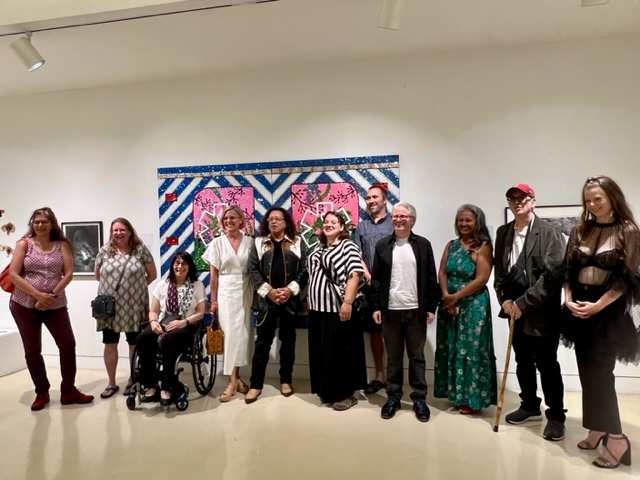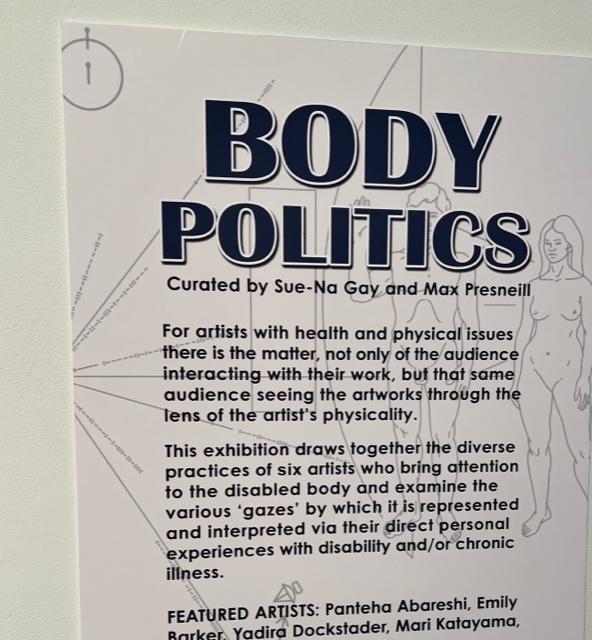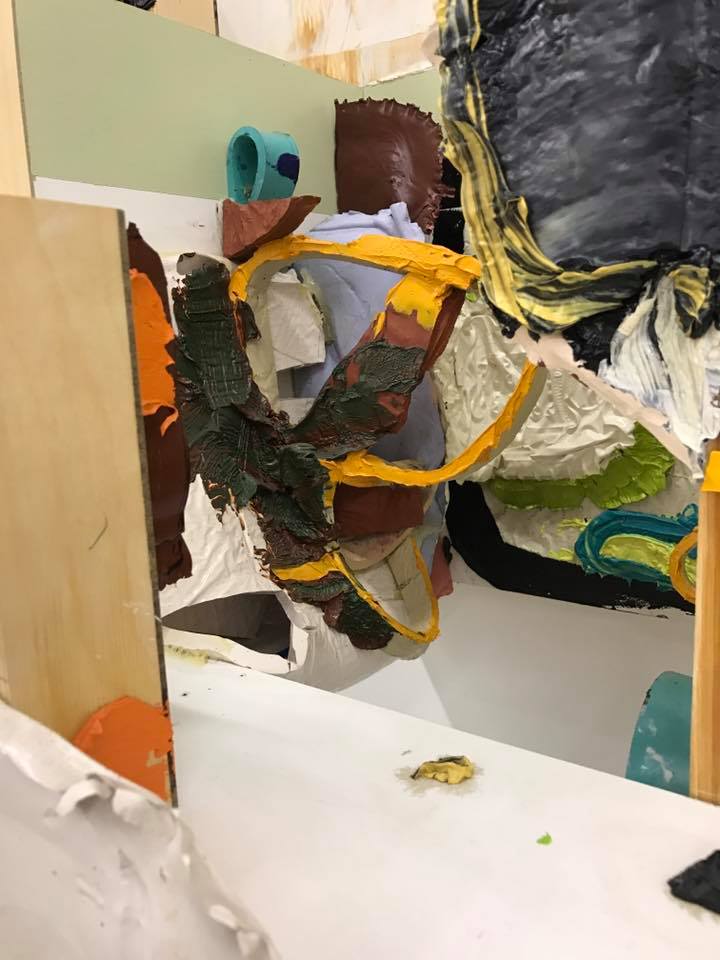
Art collectives are a wonderful thing. They bring together and support groups of artists whose eclectic and powerful work deserves a showcase which it might not find with a solo approach.
Durden and Ray are one such collective, and they have recently made a move – from a loft space across the street on Santa Fe Avenue to a pristine, white-wall gallery in the same complex as CB1.
Above, left, Tom Dunn’s “Mesopotamia #36,” a marvelous mix of the abstract and figurative in oil. Alongside, to the right, the brilliantly textured acrylic on canvas of Jenny Hagar, “Roja.” Both leap off the wall, as different as they are well-matched.
Yes, the space is lovely and airy, the light dancing off the walls and works, but it is the art itself, and the passionate spirit the collective represents that shines.

Above left, artist Dani Dodge with curator Steven Wolkoff.
The opening exhibition in the new space, Round Won was curated by Steven Wolkoff, the show features artists: Dani Dodge, Tom Dunn, Roni Feldman, Jon Flack, Jenny Hager, Ben Jackel, David Leapman, Alanna Marcelletti, Max Presneill, David Spanbock, Jesse Standlea, and Alison Woods.


Above, Alison Woods with her “Utopia,” acrylic on canvas, we have geometric patterns and vibrating lines so intense that the canvas appears layered; there are elements that evoke a collage or puzzle pieces. Viewers see a city landscape that is exploding with flora and fauna.
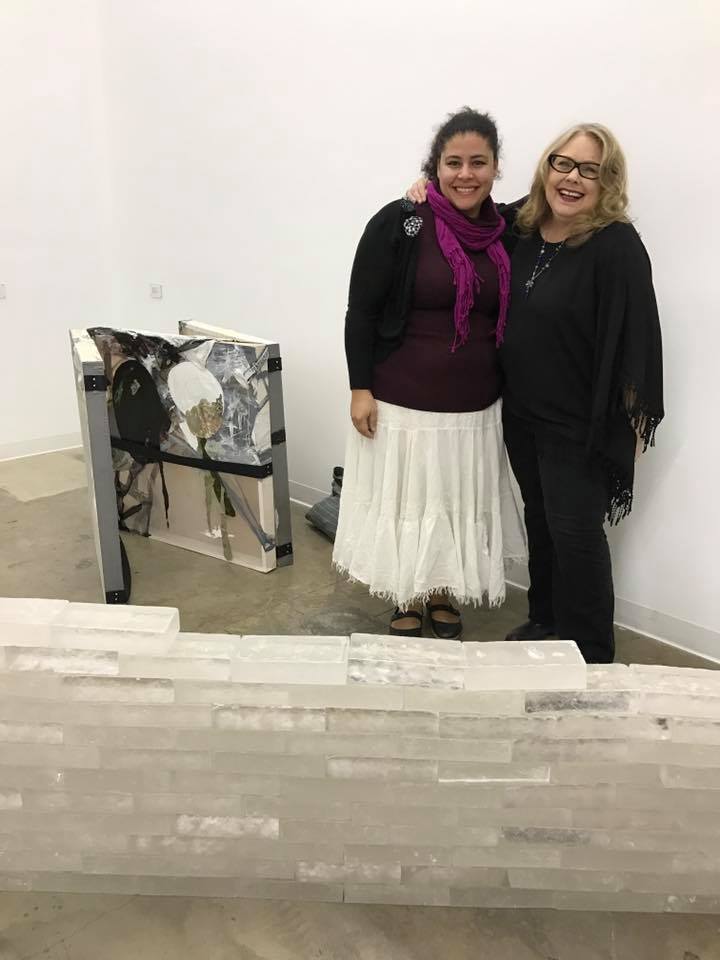
Above, Allana Marceletti, left, near her “Daae,” a sculptural collage of found objects, acrylic, and metal on organza with seatbelt straps. Hang on for the ride. Next to her is Dani Dodge, whose installation, “Ashes,” is comprised of glass containing the burnt ashes of articulated, written fears. While very different conceptually, both pieces feature sheer, almost fragile visual depth, and pull the viewer into a landscape that is shimmery and mutable.


Max Presneill stands before his oil and enamel “RD 141.” Bold graphics and lines, shapes that stand entirely on their own yet coalesce into a vivid whole. Presneill wants viewers to experience his bright, visceral work from the perspective of the “system of languages we call painting.”
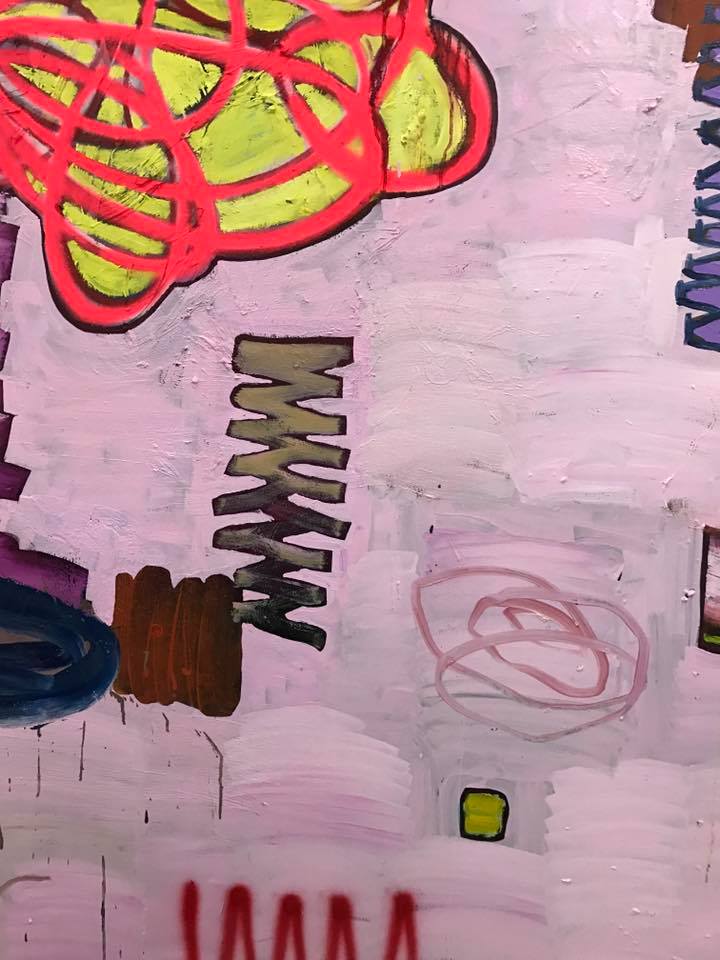

David Spanbock’s candy colored acrylic on linen, “The Politics of Transformation,” is a dimensional, unique take on urban life and environment.

And what would an urban environment be without a few fire hydrants? Ben Jackel’s “Large headed hydrants (youth, middle age, elder) are stoneware and beeswax, and serve as a kind of ‘in memoriam’ to the vicissitudes of city life. The black color renders them tomb-like, yet the overall affect is lighthearted.



Jon Flack’s “Backyard Sermon,” rear wall, takes an entirely modern approach to an iconic American subject, the itinerant preacher. Juxtaposed with Marcelletti’s sculpture and Dodge’s installation, the three works make an engaging commentary on things both profound and redemptive.
Both collectively and through each artist’s work, Round Won is more than ready for prime time.
This will be a two-part opening introducing the 24 members of Durden and Ray – Round Too, curated by Max Presneill, will open April 1st.
The show runs through March 19th. Hours are Tuesday-Saturday 10 a.m.-6 p.m.; Sunday noon-4 p.m. The new space is located at 1923 S. Santa Fe Ave. in DTLA.
- Genie Davis; photos: Genie Davis





















































































